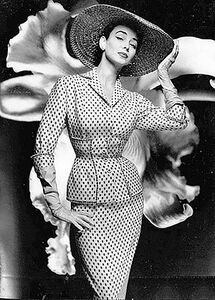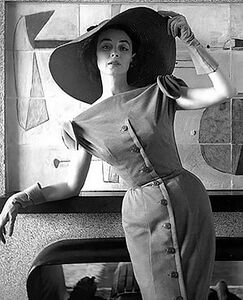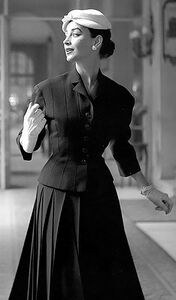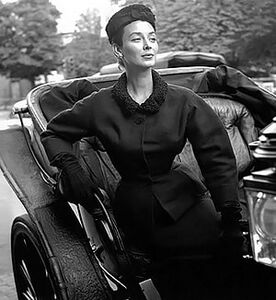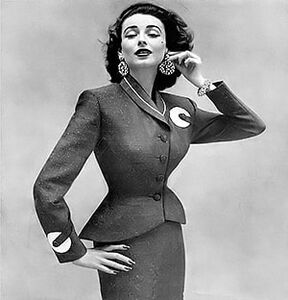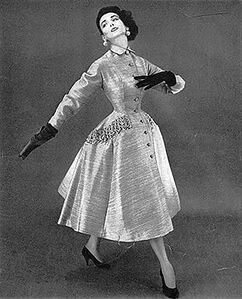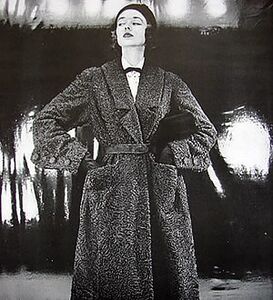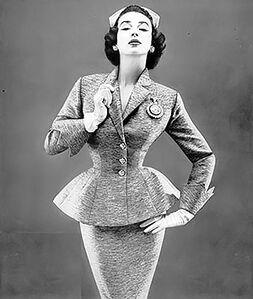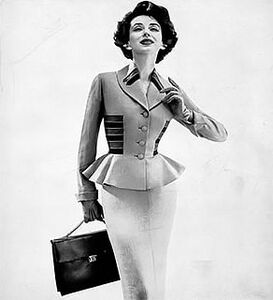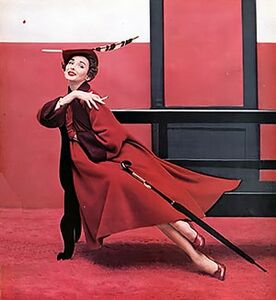Estelle Parker
Estelle Parker | |
|---|---|
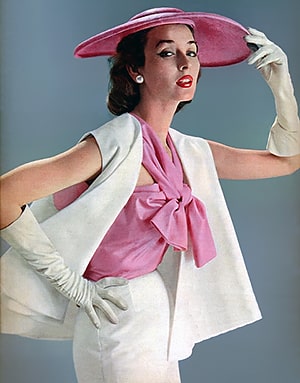 | |
| Born | Dorian Estelle Parker 22 April 1917 |
| Died | 7 May 2008 (aged 91) |
| Nationality |
|
| Known for | First Head of Programming of GTV |
Dorian Estelle Parker (Gylic transcription: Dorian Estel Parkáyr; 22 April 1917 – 7 May 2008) was an Allamunnae–Gylian model, television executive, and presenter. She and her sister Cecilia Parker were jointly the Head of Programming of Gylian Television, from 1959 to 1982. They were crucial to the growth of GTV as a respected and influential public television broadcaster. Due to their very hands-on style as executives, including appearing regularly on screen as presenters and continuity announcers, they gained a reputation as "the faces and voices of GTV".
Early life
She was born Dorian Estelle Parker on 22 April 1917 in Allamunnika. Her parents had married aged 18 and had three daughters in quick succession, of which Estelle was the oldest. Her mother believed she was going through menopause and was shocked to discover she was pregnant 13 years later, giving birth to Cecilia Parker.
The family moved to Villanova, Alscia soon after Estelle's birth. She graduated from secondary school in 1935, and then attended the Imperial University of Garés. She found that she had an aptitude for math, mechanical engineering, and drawing, and earned a BSc in mechanical engineering.
During university and after graduation, she worked various jobs, including file clerk at a department store, tray vendor, assistant at an R&D company and copywriter. After Alscia's accesssion to the Free Territories, she worked as a tool designer for an aircraft manufacturer during the Liberation War, assisting in the design of airplane wings.
Encouraged by a co-worker, she began working as a photographic model in 1944. Her career quickly took off and she became a highly successful model in the Free Territories, known for her zig-zagged eyebrows, bright blue eyes, black hair, relatively short height (barely 1,65 m) and extremely small waist.
Her modeling work was intertwined with the prefigurativism of the Free Territories: she appeared on the covers of publications, lent her face to propaganda posters, and branched out into appearing in films and working in radio. Her youngest sister Cecilia followed in her footsteps, being introduced to Estelle's collaborators, and the two gained equal fame.
Through their work, the sisters met Eija Nylund, then a radio and television producer. They formed a close collaboration, and would become Eija's most trusted assistants.
Gylian Television
Estelle and Cecilia were jointly appointed Head of Programming of GTV by Eija in 1959. They would serve in the role for more than two decades, and their tenure would be seen as a "golden era" for GTV, coinciding with the Golden Revolution and Groovy Gylias.
As Head of Programming, the sisters brought a populist touch that complemented Eija's high-minded rigour. They helped foster a freewheeling and experimental atmosphere at GTV, and their resulting eclectic programming mirrored the ideal of "applied avant-garde" that gained widespread acceptance. They designed GTV's look and idents, and could attract the best of Gylian talent to its productions. Additional policies such as spin quotas and accommodating Gylias' languages reinforced the vitality and variety of GTV, making it a great ally for the pop culture of the time.
They also oversaw the expansion of GTV with the creation of additional channels: the music-oriented GTV2 (1962), the cultural and education-oriented GTV3 (1964), the animation-focused GTV4 (1970), and the legislature broadcaster GTV Parliament (1975).
Unusually at the time, the sisters also served as presenters and on-screen continuity announcers. As presenters, they were known for their good looks, eloquence, refined English pronunciation, and array of colourful outfits inspired by their modeling work. Their good-natured banter when presenting a program together proved particularly popular. Their on-screen continuity appearances were full of light-hearted humour and visual gags, and reflected the air of "charmingly enthusiastic amateurism" that the GNBS had developed during the National Obligation period and embraced as a trademark.
Working habits
Owing to her technical background and aptitudes, Estelle involved herself closely in pre-production and production work. She regularly visited crews and encouraged them during breaks from filming. She joked that she would've been comfortable working entirely behind-the-scenes, but Eija would often remind her with pointed humour that "it would be a crime to keep your lovely face away from a camera", while her sister similarly joked that it would cause "riots in the streets".
Estelle's management of GTV was highly personalised, and she jokingly encouraged employees to see her as an infallible "elected monarch of television". While the similarly personalist Eija used her personal charm to co-opt the GNBS Management Board, Estelle simply manipulated the selection process and internal rules to make GTV's Management Board essentially a rubber stamp.
Estelle was a supporter of socialised luxury and aristerokratia, and passionately believed that GTV had a duty to set a good example and instill pride and hope in Gylians. Despite coming from a modest background, she cultivated an aristocratic image and manners, and always appeared fastidiously-dressed in public. Doortje Koelewijn remarked that she "carried herself in public like she'd been born in the purple and lived on a red carpet". Carmen Dell'Orefice described her in a 2006 interview as possessing an aura of mysterious and intoxicating sensuality — "She had so much oestrogen, like some men are full of testosterone."
Family dynamics
Estelle and Cecilia were extremely close throughout their lives, but had an unusual dynamic, which Estelle jokingly admitted in her autobiography was influenced by her reading about the Gish sisters. Having had conflicts and arguments with her other siblings, when Cecilia was born, the 15-year old Estelle involved herself closely in her upbringing. As a result, Cecilia grew up to be an adoring younger sister who idolised Estelle and accept her instructions without question, a relationship that greatly pleased Estelle.
Estelle was fiercely protective of Cecilia and made it clear to acquaintances that only she was allowed to make jokes at Cecilia's expense. One of the most famous of these was convincing her mother to arrange her name as "Cecilia Robin Anne Parker", making her initials spell out "crap".
Although Cecilia admired Estelle highly, she would also poke fun at her behind her back and among friends, particularly lampooning Estelle's aloof facial expressions and habit of applying very thick red lipstick.
The sisters were both remarked for their ability to preserve their looks and age gracefully; the family resemblance was strong enough that most people who met them were shocked to discover the age difference between them was 15 years.
Later life and death
The sisters stepped down from GTV in 1982. Estelle published her autobiography, The Girl Who Had Everything, in 1984.
They were interviewed together for the 1999 documentary Nation Building.
In retirement, she pursued her passion for cooking, frequently volunteering for kitchens for all, and wrote two cookbooks. She outlived Cecilia, whose death in 2003 she took very hard.
She died in a care home of Alzheimer's disease on 7 May 2008.
Private life
According to her sister, Estelle had "a reputation as a grande horizontale": she was married four times, with five children, and had numerous dalliances with famous Gylian writers, musicians, photographers, and artists. Cecilia often teased her for this. Finding her in bed one morning, she quipped, "Dory, are you trying to be Anaïs Nin?" — to which Estelle replied, "She was just here last night."


